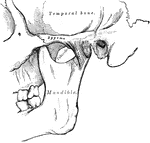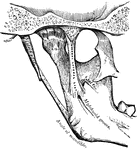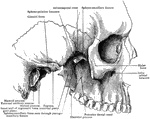Clipart tagged: ‘zygoma’

Skull of a Common Fowl
"Fig. 62 Skull of common fowl, enlarged. from nature by Dr. R.W. Shufeldt, U.S.A. The names of bones…

Temporomandibular
The external lateral ligament is a short, thin, and narrow fasciculus, attached, above, to the outer…

Temporomandibular
The external lateral ligament is a short, thin, and narrow fasciculus, attached, above, to the outer…
